By: Siddharth Mehta | Comments (5) | Related: > Master Data Services
Problem
In the Master Data Management practice, model sharing is a standard practice within and across organizations as a part of achieving compatibility, standardization and knowledge reuse. Models contain virtually everything from entities to data. Models are often shared in the form of package files which are deployed on the required Master Data Services instance. In this tip, we will look at how to create and deploy a MDS model package file.
Solution
This tip assumes you have at least one model available on your MDS instance. In case you do not, you can easily create a new blank model and then use the same steps explained below.
Creating a model package file using Model Deployment Wizard
One of the easiest ways to create a model package file is by using the Model Deployment Wizard. Open the Master Data Manager web application, and under System Administration | System menu, open Deployment. This should bring up the Model Deployment Wizard as shown in the below screenshot.
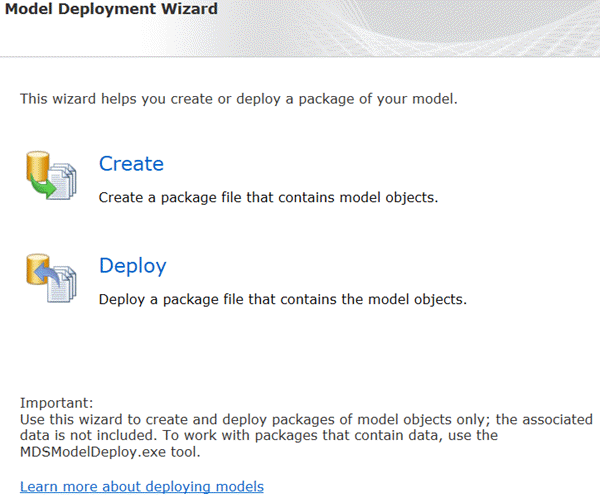
The Deploy option can be used to select the model of choice and create a package file that contains model objects, but without any data. In this case you would need to have the data included in the package file, the MDSModelDeploy tool should be used.
For the purpose of this exercise, use the Create option and create a package file for any available model. Using the same option, I created a package file called Finance_data.pkg, which I will be using for the purpose of deployment.
Deploying a model package file using MDSModelDeploy tool
One can easily deploy the package file using the Deploy option in the Model Deployment Wizard, but in cases where the packages contain data, and in few other scenarios, one would be mandated to use the MDSModelDeploy tool. So for the purpose of deployment, we will deploy the package that we created in the above section using this command line utility. Follow the steps mentioned below:
The utility can be found in Program Files\Microsoft SQL Server\110\Master Data Services\Configuration directory. Before we execute this, copy the package file that we just created into this directory, to make the command line shorter.
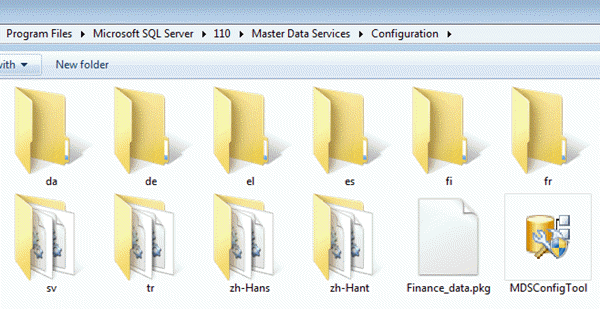
Under System Administration | Model View, you should be able to find the models available and accessible to you. Make sure that the model you intend to deploy is not already available and deployed.
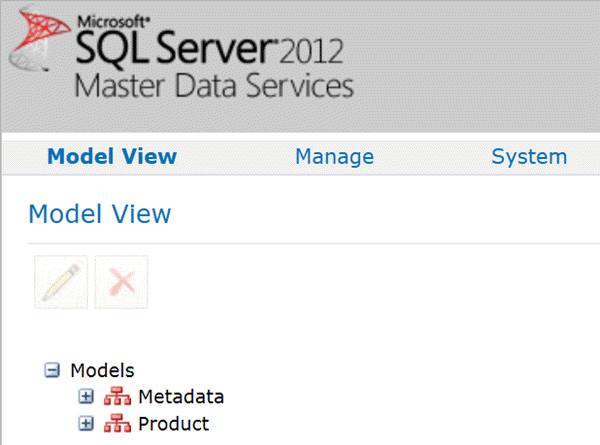
Open a command prompt as an administrator and execute the following command. The package name is the name of the package that was created in the above section and model_name is the name of the model that you wish to assign to the model being deployed.
mdsmodeldeploy.exe deploynew -model model_name -package package_name.pkg
If you have the required privileges and the package has been created correctly, it should get deployed smoothly. After successful installation, the command line output should look as shown in the below screenshot.
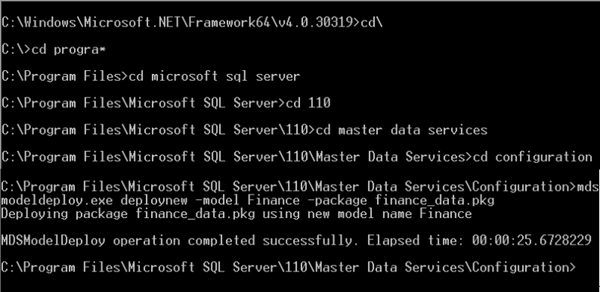
If you check the Model View again, you should see the newly deployed model. In case you do not see it deployed, close your browser and then try again.
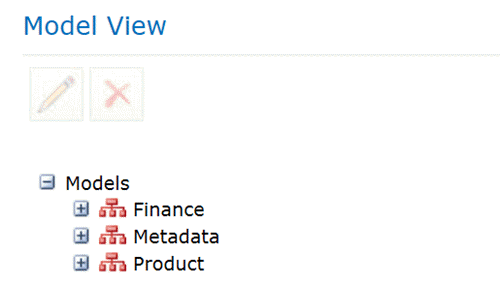
Next Steps
- Explore different options available with the MDSModelDeploy tool.
- Try different model and package management options available with MDSModelDeploy tool.
About the author
 Siddharth Mehta is an Associate Manager with Accenture in the Avanade Division focusing on Business Intelligence.
Siddharth Mehta is an Associate Manager with Accenture in the Avanade Division focusing on Business Intelligence.This author pledges the content of this article is based on professional experience and not AI generated.
View all my tips






